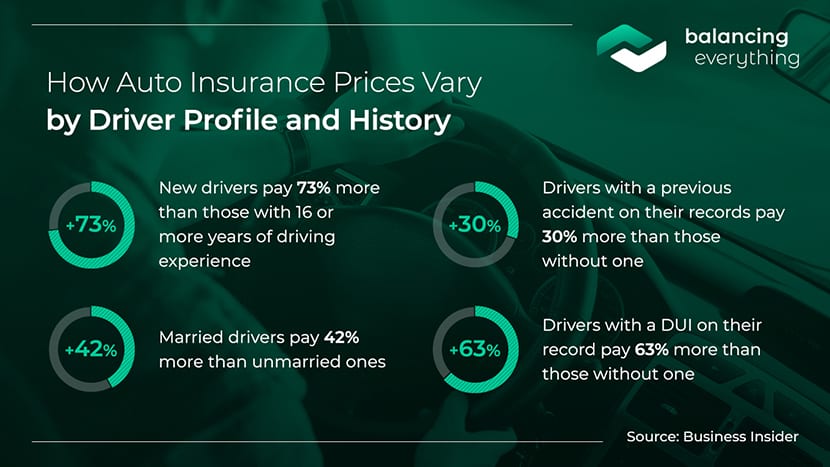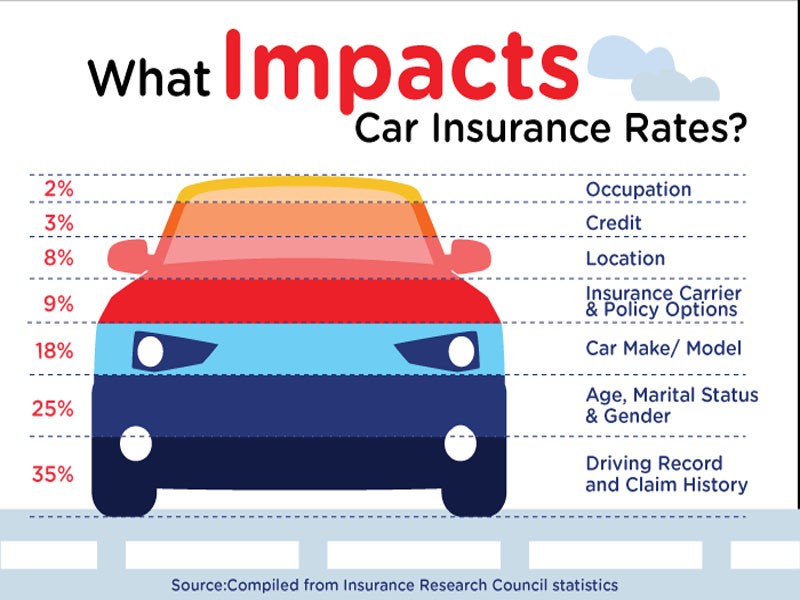The search for the best auto insurance rates can be a complex but rewarding task. In today’s competitive market, comparing quotes, understanding policy coverage, and evaluating customer service are crucial. You can discover various discounts and tailored options by utilizing online tools and researching multiple insurance companies. Auto insurance comparisons are essential to ensure you get the most value for your money, considering factors like collision coverage, comprehensive coverage, and liability protection. This guide will provide essential tips for finding the ideal auto insurance rates. This process requires thorough analysis and an understanding of your individual needs and driving history. Stay tuned to unravel the best strategies to save on your auto insurance.
1. Compare Auto Insurance Quotes Online
When searching for the most affordable car insurance options, utilize online tools to compare various auto insurance quotes. These resources provide an efficient way to assess different rates and find the best coverage available. By conducting an online comparison, you can easily compare and contrast policies from multiple providers, ensuring that you secure the best possible rates for your needs.
2. Understand Your Coverage Needs
Your insurance requirements are essential in establishing your policy customization. Understanding your coverage needs is crucial to finding the best auto insurance rates. Customize your policy based on your desired level of protection.
Deciding on the right coverage depends on several factors, including your vehicle’s value, financial situation, and personal preferences. Analyzing these aspects lets you outline the necessary level of protection for your automobile.
Consider if you require comprehensive and collision coverage or solely liability coverage. Comprehensive and collision coverage safeguards against damages caused by accidents, theft, vandalism, or natural disasters. Liability coverage provides you with financial security in case of an accident that causes injury or property damage to others.
By thoroughly evaluating your specific insurance needs, you can select the ideal coverage options for a policy customized to suit you best without overpaying for unnecessary protection.
3. Consider Different Deductibles
When navigating the landscape of auto insurance rates, a crucial aspect to ponder is the array of deductible options available to you. Picture the deductible as the initial sum you’re responsible for paying before your policy kicks in. It’s a financial checkpoint that influences both your premium and your liability in the event of an accident.
However, don’t assume that a higher deductible guarantees long-term savings. Although opting for a higher deductible can result in lower monthly premiums, it’s essential to balance this advantage against the potential fiscal load if you need to cover a substantial deductible after an unexpected incident. Striking the right balance hinges on considering your financial circumstances and your comfort level with assuming certain risks.
Moreover, let’s delve into the intriguing fact that distinct types of coverage can sport varying deductible amounts. Consider this scenario: collision coverage might come with a deductible that differs from what comprehensive coverage entails. To craft an insurance plan that aligns seamlessly with your requirements, it’s wise to factor in the specific coverage types you deem necessary and tailor your deductible choices accordingly. By artfully combining coverage types and deductible selections, you’ll orchestrate a symphony of protection that harmonizes with your unique circumstances.

Credit:balancingeverything.com
4. Explore Bundle Options
Opting for insurance bundles simplifies your policy management and offers significant cost savings. Many insurance providers offer multi-policy discounts, which can help reduce your overall premium costs. By combining coverage for your auto, home, and other insurance needs with the same provider, you can enjoy the convenience of a comprehensive policy while enjoying substantial savings.
When you explore bundle options, you are considering the advantages of combining two or more insurance policies with a single provider. This approach is convenient and can result in lower premiums due to multi-policy discounts. Instead of managing separate policies for your auto, home, and other needs, bundling allows you to streamline your coverage under one umbrella policy.
Furthermore, by opting for an insurance bundle, you may also access additional benefits such as enhanced coverage or specialized add-ons. This means that you save money and ensure that your policy adequately protects you in case of an unfortunate incident.
Considering insurance bundles and taking advantage of multi-policy discounts is an effective way to minimize expenses while simplifying your insurance management. Remember to compare different bundle options from various providers to decide on the best package that suits your unique needs.
5. Maintain a Good Driving Record
Maintaining a positive driving track record is critical to finding the best auto insurance rates. Ensuring you have a clean driving history and minimizing risk can result in good driver discounts and lower premiums.
Keeping a good driving record is as easy as following these five steps:
- Obey Traffic Laws: Adhere to speed limits, traffic signals, and other regulations.
- Avoid Distracted Driving: Do not text or talk on the phone while driving.
- Practice Defensive Driving: Maintain a safe distance from the vehicle in front of you and be aware of any potential hazards.
- Attend Defensive Driving Courses: Learn more about road safety by enrolling in defensive driving courses.
- Maintain Clean Driving History: Avoid accidents and traffic violations that could impact your driving record.
Additionally, being mindful of unique details like keeping your vehicle well-maintained, regularly checking tire pressure, and obtaining routine inspections contribute to safe driving practices. These factors demonstrate responsible behavior and can positively influence your insurance premiums.
6. Consider Usage-Based Insurance
Usage-Based insurance, or telematics or usage-based coverage, is a unique approach to auto insurance that offers personalized rates based on your driving habits. Instead of relying solely on traditional factors like age and location, usage-based insurance uses data collected through a device installed in your vehicle to assess your driving behavior. This includes mileage, speed, acceleration, and braking patterns. By considering usage-based insurance, you can receive more accurate and customized insurance rates that align with your driving habits.
With usage-based insurance, you can benefit from lower premiums if you demonstrate safe driving habits. For cautious drivers who rarely exceed speed limits or engage in sudden maneuvers on the road, this type of coverage can reward your responsible behavior with reduced rates. However, if you have riskier driving behavior, such as hard braking or rapid acceleration, you may not see a significant reduction. Making necessary adjustments to your driving skills can help you save money over time.
Furthermore, another advantage of usage-based insurance is that it allows insurers to assess risk levels and provide personalized pricing accurately. Unlike traditional auto insurance policies that rely on general statistical assumptions about demographic groups or locations, usage-based insurance considers individual driving patterns and behaviors. Suppose you are a low-risk driver despite belonging to a high-risk demographic group (young or inexperienced drivers). In that case, you may access more affordable rates through usage-based coverage.
Incorporating telematics into auto insurance benefits individuals and helps promote safer driving habits overall. The data collected through the device allows insurers to identify areas for improvement and offer feedback to policyholders. By receiving insights into their driving performance and being incentivized to practice safe habits to qualify for lower premiums, motorists are encouraged to become better drivers and contribute towards reducing accidents and incidents on the road.

Credit: ocmoneymanagers.com
7. Opt for Paperless Billing and Automatic Payments
Opting for a digital payment method, such as paperless billing and automatic payments, can be a wise choice when managing your auto insurance. This option provides convenience in billing and ensures timely payments without needing physical paperwork or reminders. By embracing these eco-friendly options, you can streamline your insurance process while reducing environmental impact.
Here are key points to consider:
- Convenient Billing: Say goodbye to paper bills and the hassle of manually keeping track of payment due dates.
- Automated Payments: Set up automatic deductions from your bank account or credit card to ensure timely and hassle-free premium payments.
- Simplified Record-keeping: Digital receipts and transaction histories provide easy access to past billing information, saving you time and effort when needed.
- Elimination of Late Fees: With automated payments, you can avoid late fees resulting from missed deadlines or delayed processing.
- Improved Financial Planning: By knowing exactly when your premium will be deducted from your account, you can better manage your finances and allocate funds accordingly.
- Eco-Friendly Option: Opting for paperless billing reduces waste by eliminating the need for physical mailings, contributing positively to our environment.
By choosing this digital alternative, you benefit from the convenience it offers and contribute towards a cleaner and greener future. So consider opting for paperless billing and automatic payments today!
8. Review and Update Your Policy Annually
A policy review is essential to ensure you have the most up-to-date coverage. Making annual updates helps you keep your policy in line with any changes in your circumstances or the insurance industry. Here are 5 key points to consider:
- Assess your coverage needs: Review your current policy and evaluate if it adequately covers your needs. Consider factors like changes in your lifestyle, additional drivers, or acquiring new assets.
- Check for discounts: Insurance companies may offer new deals you qualify for. These cost-saving opportunities can be accessed by reviewing and updating annually.
- Evaluate deductible options: Revisit the deductible amount on your policy. Increasing it can lower your premium but ensure you can afford to pay a higher amount out of pocket when making a claim.
- Update personal information: Make sure your contact details and other personal information are correct so that you receive important communications from the insurer promptly.
- Review payment options: Explore different payment methods, like paying annually or setting up automatic payments. This can lead to savings on premiums and avoid late payment penalties.
Staying current by regularly reviewing and updating your policy is crucial. As your circumstances change, you can take advantage of new discounts, and you can optimize coverage accordingly. By taking this proactive approach, you can ensure that you have the best auto insurance rates.
9. Evaluate the Financial Strength of Insurers
To assess the robustness of insurers’ financial resources, one must evaluate their financial strength. Determining the fiscal stability of insurance providers is vital before purchasing an auto insurance policy. By examining insurer ratings and considering their financial standing, individuals can identify reputable providers that are capable of fulfilling their obligations in times of need. Ensuring the potential insurers have strong backing allows policyholders to have peace of mind knowing they are partnering with financially stable entities in case of unforeseen events.





